Driving Aids Allow Motorists to Tune Out, NTSB Wants Automakers to Fix It

Driving aids are touted as next-level safety tech, but they’re also a bit of a double-edged sword. While accident avoidance technology can apply the brakes before you’ve even thought of it, mitigate your following distance, and keep your car in the appropriate lane, it also lulls you into a false sense of security.
Numerous members of the our staff have experienced this first hand, including yours truly. The incident usually plays out a few minutes after testing adaptive cruise control or lane assist. Things are progressing smoothly, then someone moves into your lane and the car goes into crisis mode — causing you to ruin your undergarments. You don’t even have to be caught off guard for it to be a jarring experience, and it’s not difficult to imagine an inexperienced, inattentive, or easily panicked driver making the situation much worse.
Lane keeping also has its foibles. Confusing road markings or snowy road conditions can really throw it for a loop. But the problem is its entire existence serves to allow motorists to take a more passive role while driving. So what happens when it fails to function properly? In ideal circumstances, you endure a moderate scare before taking more direct command of your vehicle. But, in a worst case scenario, you just went off road or collided with an object at highway speeds.
Following a handful or accidents involving semi and fully autonomous driving systems, the National Transportation Safety Board has concluded that automakers need to do more to ensure people don’t misuse those functions. Tesla, which has already seen two NTSB investigations after fatal Autopilot incidents, shored up its semi-autonomous system to require a more hands-on approach. However, owners have discovered workarounds — like affixing a water bottle or an orange to the steering wheel.
“What Tesla has is basically a sensor that just detects whether your hands are on the wheel,” explained Gartner Inc. researcher Mike Ramsey. “If it doesn’t detect anything on the wheel for a certain amount of time, it first gives a visual warning, then an audible warning, then the car starts slowing down. It’s somewhere in the neighborhood of 10 seconds or longer. At 70 miles per hour, that’s a long time — a lot can happen in that period of time.”
According to Bloomberg, the NTSB says Tesla is working on unspecified improvements that will make its driver-assistance systems more difficult to abuse. “They have indicated that they have already made some improvements and are working on additional improvements,” agency spokesman Peter Knudson said, noting NTSB highway investigators have been in regular contact with the automaker’s technical staff.
One safety measure, developed by both General Motors and Subaru, is infrared cameras that tracks the driver’s eye and head movements. By being able to register when someone is about to nod off or check their smartphone, the vehicle can respond accordingly. Still, this doesn’t address the issue that driving aids inherently remove the operator from direct engagement in what’s happening around them. Studies have shown that even attentive drivers take longer to respond in emergency situations when semi-autonomous systems have been operating for several minutes.
Even simple aids can dull your senses if you let them.
The University of Michigan published a study way back in 2010 that claimed blind spot detection systems caused people to stop looking over their shoulder to check for themselves while changing lanes. “The more they are exposed to these systems, the more they trust the systems,” explained Shan Bao, an associate researcher at the university’s Transportation Research Institute, who conducted the study. In most situations, “they’ll trust the systems more than they’ll trust themselves.”
“Without question, technology is making drivers lazier and less attentive,” said Mike Harley, managing editor at Kelley Blue Book in an interview from 2017. “Most of today’s digital ‘driver assistance’ features are designed to overlay basic driving skills, which relaxes the driver’s sense of responsibility.”
Despite all of this, the Insurance Institute for Highway Safety has suggested driving aids actually reduce accidents in the long run. While its research focused primarily on lane departure warnings and blind spot detection, the working assumption was that electronic aids were good. However, the IIHS has also acknowledged that assistance systems probably degrade a person’s driving skills. “There are lots of concerns about people checking out and we are trying to monitor that now,” said Adrian Lund, president of the Insurance Institute for Highway Safety. “Everything we do that makes the driving task a little easier means that people are going to pay a little bit less attention when they’re driving.”
At the end of the spectrum, a fully autonomous car allows a driver to disengage entirely. That can be incredibly dangerous if the vehicle isn’t operating perfectly. If something fails, you have a situation like what happened with Uber in Tempe, Arizona earlier this year. That fatal collision with a pedestrian could have been avoided if the vehicle’s operator was paying attention to the road ahead. When a car can supposedly drive itself, remaining engaged becomes a real problem.
“[Driver attentiveness] is really a critical area,” said Bryan Reimer, who studies driver behavior at the Massachusetts Institute of Technology. “We are clearly picking up technology in the car, portable phones, et cetera, at rates that are far and above what should be socially acceptable.”
Safety groups everywhere are asking automakers, tech firms, and even the government to slow down and consider how these technologies are being implemented. While they have the potential to save lives, especially if someone is a subpar driver, they also encourage bad behavior behind the wheel.

A staunch consumer advocate tracking industry trends and regulation. Before joining TTAC, Matt spent a decade working for marketing and research firms based in NYC. Clients included several of the world’s largest automakers, global tire brands, and aftermarket part suppliers. Dissatisfied with the corporate world and resentful of having to wear suits everyday, he pivoted to writing about cars. Since then, that man has become an ardent supporter of the right-to-repair movement, been interviewed on the auto industry by national radio broadcasts, driven more rental cars than anyone ever should, participated in amateur rallying events, and received the requisite minimum training as sanctioned by the SCCA. Handy with a wrench, Matt grew up surrounded by Detroit auto workers and managed to get a pizza delivery job before he was legally eligible. He later found himself driving box trucks through Manhattan, guaranteeing future sympathy for actual truckers. He continues to conduct research pertaining to the automotive sector as an independent contractor and has since moved back to his native Michigan, closer to where the cars are born. A contrarian, Matt claims to prefer understeer — stating that front and all-wheel drive vehicles cater best to his driving style.
More by Matt Posky
Latest Car Reviews
Read moreLatest Product Reviews
Read moreRecent Comments
- Kwik_Shift_Pro4X No thanks. You'll never convince me that anybody needs this.
- Kwik_Shift_Pro4X I'd rather do the driving.
- SCE to AUX EVs are a financial gamble for any mfr, but half-hearted commitment will guarantee losses.BTW, if there were actual, imminent government EV mandates, no mfr could make a statement about "listening to their customers".
- Zachary How much is the 1984 oldmobile (281)8613817
- Yuda Very dystopian. Not good.




















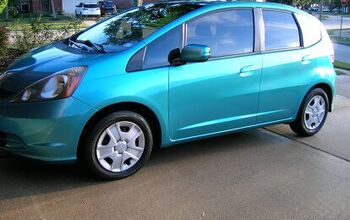
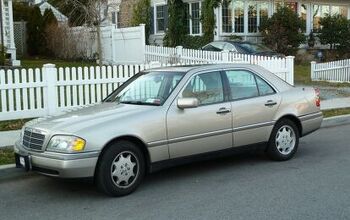

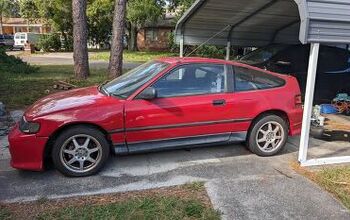
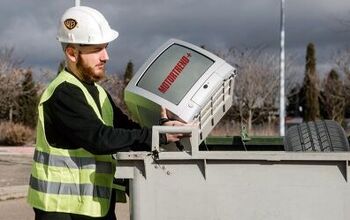

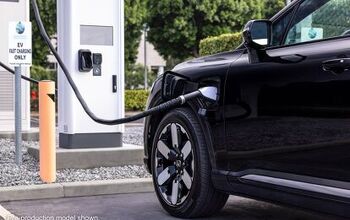



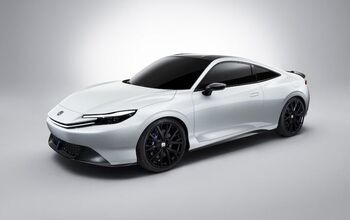



Comments
Join the conversation
I keep the lane control feature turned off on my Lacrosse. I find the tugging of the wheel when getting close to a white line annoying. This happens when changing lanes unless you use the turn signal. I had never experienced this feature so when I left the dealership and got on the highway I noticed the vehicle pulling to the right. I told my wife, this car has got to go back for a front end alignment!
Just not interested in any of it. I have had various driver aids in sundry rental cars and find them universally annoying with the sole exception of radar cruise control. Which I find somewhat useful, but am too cheap to pay for.